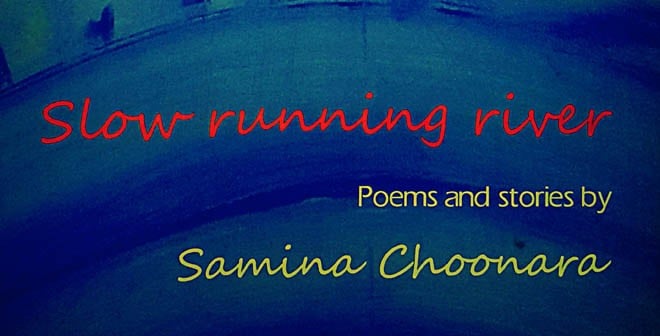
Away from the world of literary festivals, a fresh addition to the world of anglophone letters from Pakistan

The book is a slim volume that contains 28 poems and four short stories. It is officially published by Small Print, a small publishing house managed by the author. It can qualify as a vanity publication but the book itself is neither narcissistic nor commercial. It also contains drawings by Ahmed Ali, a veteran artist trained at the National College of Arts (NCA), Lahore. The book is a celebration of art for art’s sake in its thoroughly nonchalant approach towards the logic of the market.
There is nothing wrong with self-publication. Stephen King, Mark Twain, Edgar Ellen Poe, and Walt Whitman -- and many more -- all self published for various reasons. If you are a poet, it is almost impossible to break into print because publishing houses are reluctant to invest their money on book projects that are unlikely to be commercially successful. The publishing industry, being a profit-oriented business, is more likely to invest on what sells. Chetan Bhagats and James Pattersons are what the publishers want.
With all this in mind, one can actually praise the poet and the short story writer for taking the matter in her own hands like N. Frank Daniels, an author who self-published his first novel Futureproof and then created such a storm on the social media about his books that a mainstream publisher got interested.
Samina Choonara is known in the literary and artistic circles of Lahore as someone who follows her own path. A former editor, she has been associated with the NCA, and has worked on collaborative projects with artists, academics, and media persons. This is her first selection of poems and stories available. The volume appears slim and this reviewer would have liked to access more of her work. It is, perhaps, a proof that the poet is conscious of what to include and must have kept a lot of her poems and prose out of this compilation. The selection criteria seems to have been very strict, almost unforgiving.
Almost all the poems included in this thin volume are well-crafted and uncompromising, and the artistic standards are quite high. Some of the poems are worthy of being turned into plaques on the walls of bookshops where lovers hang out.
For example:
Your cardamom smell
in my mouth
opens the door behind
my eyes to let the desert roll out
a carpet of down.
Finding love in my body
from your body
freezes the pain in the blood
blanched carcass flaking
in a snowstorm
never seen.
As a reviewer who believes in Susan Sontag’s argument articulated in her essay "Against Interpretation", I do not think that a poem or a work of art has the duty to become meaningful. Even a child who uses his or her crayons to create murals, graffiti or artwork on the walls of a house or the margins of a textbook is creating something joyful and there is no authority in the world who can demand the child to "become meaningful". For Sontag, it was Plato who burdened all the artists of the world with his demand for an explanation. It was an order by a philosopher-king who wanted everything to be closer to his metaphysical ideals, the divine mind that even considers the world a simulacrum. With such ideas, Plato sought to banish poets from his ideal republic and, many centuries later, Karl Popper included Plato, Hegel, and Marx as the enemies of an open society because of their insistence that every utterance should be sententious.
Even the stories included in the book tell us that Choonara has chosen to follow her own paths in poetry, fiction and, perhaps, in her everyday life. In a short story titled "The Burgundy Cardigan," the protagonist or the first-person narrator, or the "I" of the story, is standing under a tree when an earthquake begins shaking the earth. It is at this moment, a neighbour asks the protagonist to go and collect her valuable things. The protagonist reacts: "It wasn’t at once clear to me what I was supposed to feel because this was such an intimate encounter with the earth breathing under your feet, alive, heaving a sigh and wishing to turn over to refresh itself, no more."
The book is replete with such refreshing acknowledgments and celebrations of the inability of the world to signify something. It is a fresh addition to the world of anglophone letters from Pakistan, away from the world of literary festivals, away from the local darlings of global publishing houses, and away from the concerns of this or that ideology or this or that civilisation. It is one woman making her own statement, on her own and one artist adding drawings to illustrate her poem.
It is a commendable gesture to be so unconcerned with the world that is frenetic in its chase of success. I wish there were more postcolonial writers following this model, but then there have to be some non-Western writers who can challenge the Donald Trumps of this world by satisfying the criteria of worldly success.
The book is available at Sang-e-Meel Publications